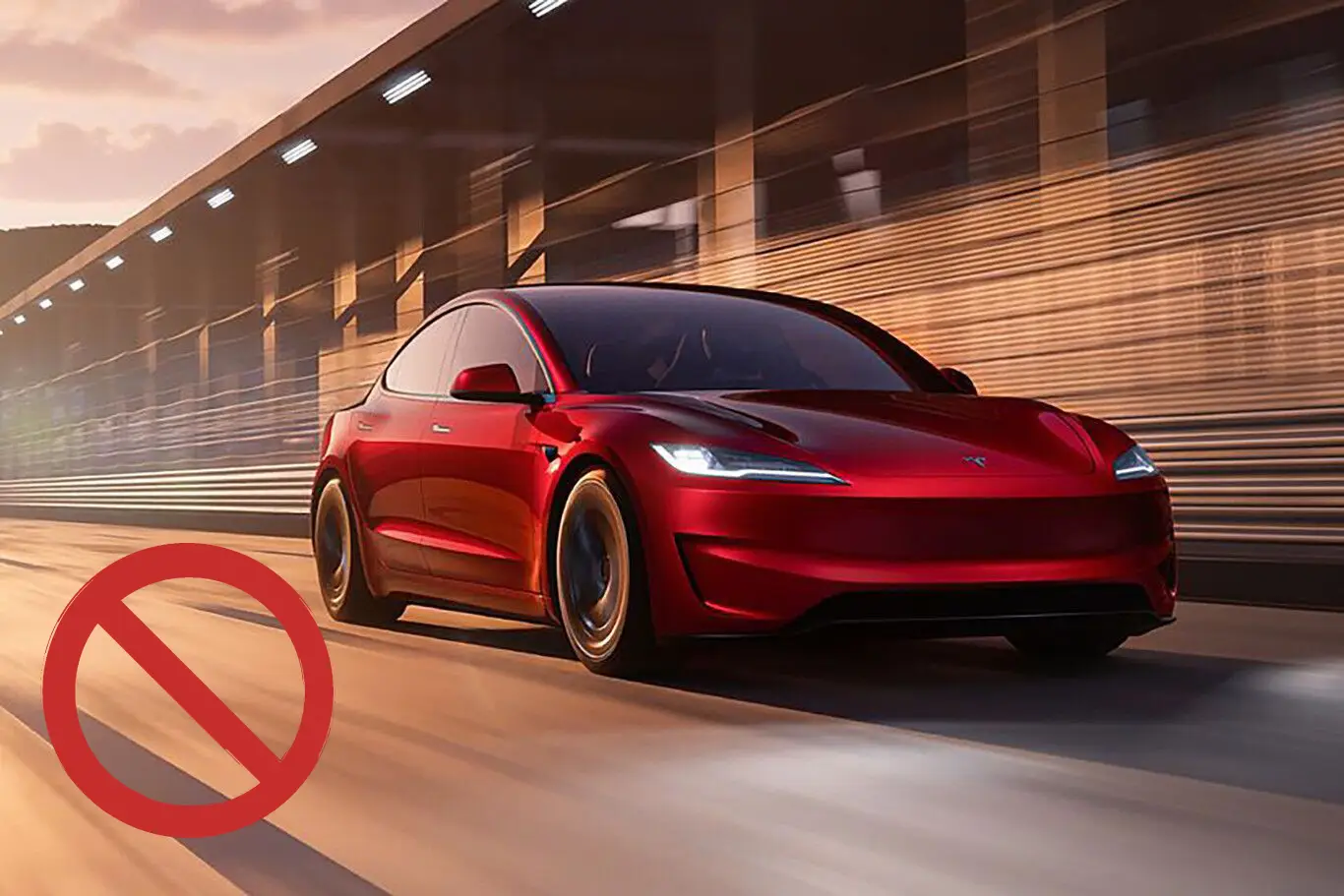The tariffs imposed on Chinese imports are creating ripples throughout the U.S. auto industry, and Tesla is at the center of this storm. Tesla’s decision to remove the Tesla Model 3 Standard Range Rear-Wheel Drive from its lineup, amidst rising tariffs and regulatory changes, is reshaping the landscape for electric vehicles (EVs) in America.
But how exactly are these tariffs affecting Tesla, and what does this mean for the future of affordable EVs?
Tesla’s Recent Sales and Stock Performance
This week, Tesla reported its Q3 2024 sales, and while the numbers showed growth, it wasn’t the kind of growth analysts had anticipated. The stock market responded negatively to this unexpected result. Tesla also removed one of its most affordable options, the Model 3 Standard Range Rear-Wheel Drive, which had been priced at $38,990. This removal could frustrate both investors and buyers alike.
Why Was the Model 3 Standard Range Removed?
So, what led to the removal of the Tesla Model 3 Standard Range Rear-Wheel Drive? One significant factor is the 100% tariff on electric vehicles and the 25% tariff on EV batteries and key minerals from China. The Model 3 Standard Range, which uses Lithium Phosphate (LFP) battery cells sourced from China, is directly impacted by these tariffs.
More Like This: PlayStation Network back online after major outage
Additionally, vehicles that include Chinese-made components, like the LFP battery cells, do not qualify for the $7,500 federal tax credit under the Inflation Reduction Act. This made the Model 3 Standard Range less attractive to buyers seeking affordability. Tesla’s decision to remove it from the U.S. market likely stems from both the financial burden of these tariffs and its ineligibility for the tax credit.
The Role of Chinese Tariffs in Tesla’s Strategy
Tesla’s move illustrates the far-reaching effects of U.S. tariffs on Chinese imports. Elon Musk, Tesla’s CEO, has been vocal in his opposition to these tariffs, especially as they have a direct impact on the company’s bottom line. The rising cost of imported materials—like batteries—could drive up the prices of EVs in the U.S. across the board. But how significant is this impact?
The Tesla Model 3 Long Range Rear-Wheel Drive, now the most affordable option in the U.S. at $42,490, is still more expensive than the Model 3 Standard Range. The combination of increased tariffs and regulatory constraints on Chinese components has likely accelerated Tesla’s decision to drop the entry-level model, which would otherwise struggle to remain cost-competitive.
Are U.S. Tariffs Driving Up EV Prices?
It’s not just Tesla that could face challenges. The broader U.S. auto industry relies heavily on cheaper Chinese components to keep costs down, and the tariffs are set to make new vehicles significantly more expensive. This leaves consumers asking: Will the price of new vehicles skyrocket as a result of these tariffs? Experts suggest that this may be the case, especially for electric vehicles.
More Like This: Awsome! OpenAI’s Financial Power: $10 Billion in Liquidity
EV manufacturers across the industry are facing rising production costs due to increased tariffs on key components like batteries and minerals sourced from China. Without these components, manufacturers are forced to turn to more expensive alternatives, which can drive up the final price for consumers. For Tesla, the elimination of the Model 3 Standard Range could be just the beginning of a wider trend in the industry.
How Tariffs Could Shape the Future of the U.S. Auto Industry
Tesla’s response to these tariffs may foreshadow larger shifts in the auto industry. If other automakers follow Tesla’s lead, we could see fewer affordable electric vehicle options on the market in the coming years. Could this slow down the adoption of electric vehicles in the U.S.? The answer is uncertain, but the increased financial strain on manufacturers is likely to create barriers for both companies and consumers.
In the case of Tesla, the removal of the Model 3 Standard Range Rear-Wheel Drive not only marks the end of an era for its most affordable EV, but it also reflects a broader economic reality shaped by trade tensions. Musk’s vocal opposition to these tariffs highlights his concern that they may do more harm than good to the U.S. auto industry.
What Does This Mean for Consumers?
For those in the market for a Tesla, the current Model 3 Long Range at $42,490 is now the entry-level option. However, it remains to be seen how much longer Tesla and other automakers can hold the line on pricing as tariffs continue to increase.
More Like This: Who Won the VP Debate? Key Moments and Reactions
The rising cost of manufacturing could make affordable electric vehicles harder to find, pushing some consumers toward more expensive alternatives or even traditional gas-powered cars.
Tesla’s Model 3 and the Unfolding Impact of Tariffs
The decision to discontinue the Tesla Model 3 Standard Range Rear-Wheel Drive underlines the significant impact tariffs are having on the U.S. auto industry. As tariffs on Chinese imports increase, so do the challenges for manufacturers like Tesla, which rely on Chinese components for affordable EV production. This is reshaping Tesla’s lineup and could alter the trajectory of the U.S. electric vehicle market.
The question remains: Will tariffs continue to push up prices, or will manufacturers find ways to adapt? Either way, the U.S. auto industry is at a critical juncture, and Tesla’s recent changes are a clear sign of the challenges ahead.








